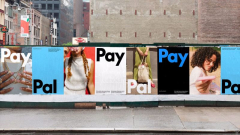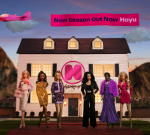It’s no secret that many creative professionals have a bit of a love-hate relationship with LinkedIn. From virtue signalling and promoting hyper-productive hustle mentality to oddly placed anecdotes, the platform has become the subject of quite a few memes and TikTok parody videos.
Then, just as we seemed to be getting over the “cringe” aspect of it and started treating it as a professional platform, a culture of criticism emerged. You could even go as far as comparing it to what you might see on X (formerly Twitter), which is losing record numbers of users as a result of the toxic rhetoric that became commonplace on the platform in recent years (among other things).
In the world of design, there’s no doubt that this reprehension is being fuelled by seemingly controversial rebrands. Accusations of ‘blanding’, ‘wokeness’, and even just plain ugliness have circulated in relation to branding projects in 2024, but it all came to a head just a few weeks ago with the unveiling of the new Jaguar identity.
In a bid to explain why Jaguar got such a reaction, Brandon founder and CEO Richard Brandon Taylor says: “Established brands carry memory structures that people already associate with them, and they are crucial in the way consumers connect with these brands on an emotional level.
“Changing these can cause powerful responses and emotions, which always rise to the surface in these types of backlashes against rebrands.”
Perhaps the most baffling fact is that it is often the designers themselves who throw the first stone. Unfortunately, most posts on publications and social platforms are all about clicks and likes and being the first to jump on a story, which results in thoughtless comments and misinformed articles.
Those who know Creative Boom well know that we like to address a project’s challenges head-on—we ask, we listen, and we relay in what we hope is a positive and respectful way (yes, we’re breaking the fourth wall for this). We know we can’t change the way that the media landscape operates with one article, but we might just be able to convince a few people in the creative industries to think before they type.
Don’t expect another article about the Jaguar rebrand – I’m sure everyone is over that by now – expect insight from your peers and fellow designers on how you can promote a more positive culture of constructive criticism in our industry.
Copy nothing. #Jaguar pic.twitter.com/BfVhc3l09B
— Jaguar (@Jaguar) November 19, 2024
Copy Jaguar.
— Nothing (@nothing) November 20, 2024
Making the news
How often do rebrands make national news? And we’re not just talking about the creative press here; we’re talking broadsheets, radio and even TV.
There are a few stories that we will all remember for their controversy: the London 2012 logo, which Bloomberg accused of being “the worst in Olympic history”, the famous Guardian headline about Airbnb – “Is it balls, vagina or both?” – and Twitter changing over to X (does anyone actually call it that?).
Johnny Selman, founder and executive creative director of Brooklyn-based studio Selman, says, “Today, a rebrand is a recipe for a good public spectacle. It’s unfortunate that public gut reactions to rebrands trend negative, or maybe those are just the ones you hear about.”
Do you remember the last time a rebrand went viral and was being talked about on BBC Breakfast for being absolutely spot on? The sad fact is it just doesn’t happen.
The design and creative sector already has an image problem, as those outside the industry often see those roles and their output as purely aesthetic. But, as Jamhot co-founder Graeme McGowan says, “If we don’t value our industry and build it up, how can we expect anyone else to value it either?”
He adds: “I just find it so boring how every high-profile rebrand is met with a barrage of expert opinions, to the point of it being tedious in the extreme. For me, it’s the opposite of creativity – build things up, don’t tear them down.”
It’s easy enough to bash out a few critical comments from the comfort while hiding behind your computer screen. According to McGowan, the real challenge would be taking the discussions offline and actually showing people what you think is an example of a good rebrand. “Creation is challenging; criticism is easy. Discuss it over a coffee or a pint, but maybe don’t write a think piece on it,” he adds.
You sound like our legal team pic.twitter.com/NYu2HCZrmn
— Aldi Stores UK (@AldiUK) November 21, 2024
When meme turns mean
There’s no doubt that conversations online can easily become more heated and hurtful than if they took place in person. Even if you don’t mean it that way, people often can’t convey the right tone when trying to wrangle a bunch of words together to post an opinion on a rebrand.
London-based design agency Bloom’s associate creative director Stuart Witter admits that he does love “the creative tension that surrounds a controversial rebrand” and also enjoys the “rich seam of humour that usually emerges”.
While we all love a good meme, the lines too easily become blurred and valid debate quickly tips into viciousness. Witter says, “This sl





